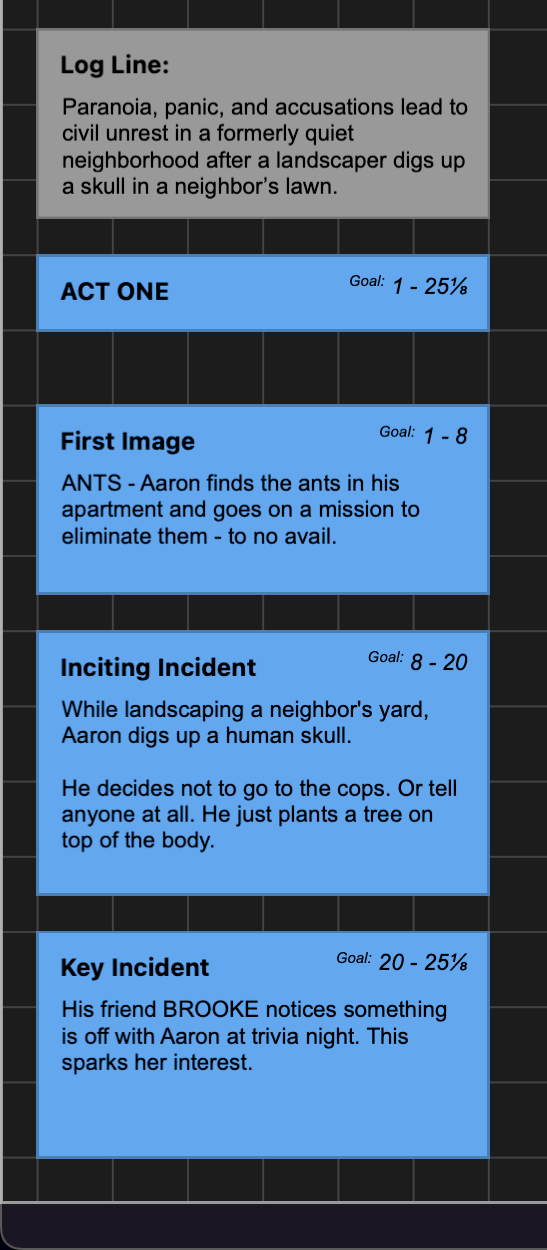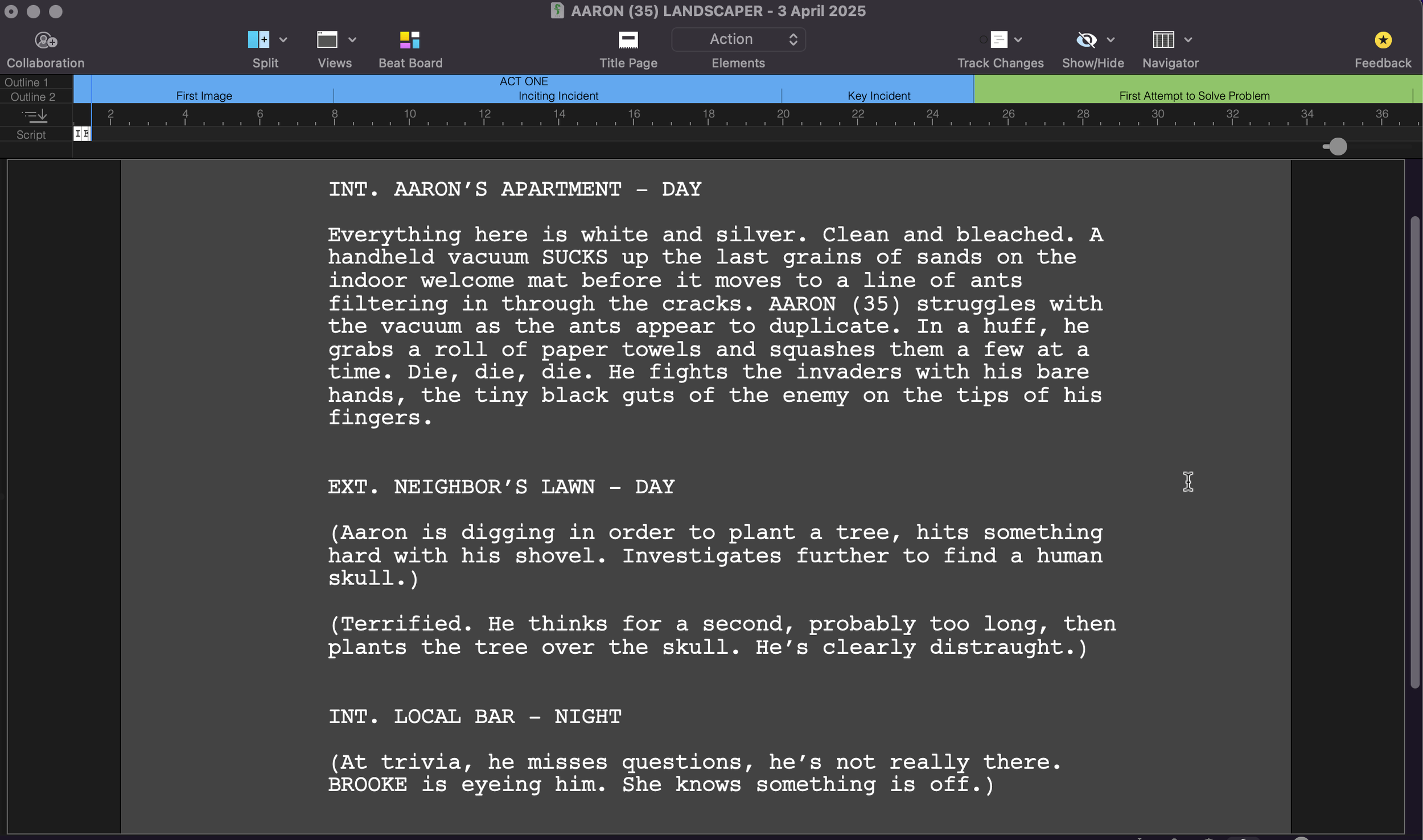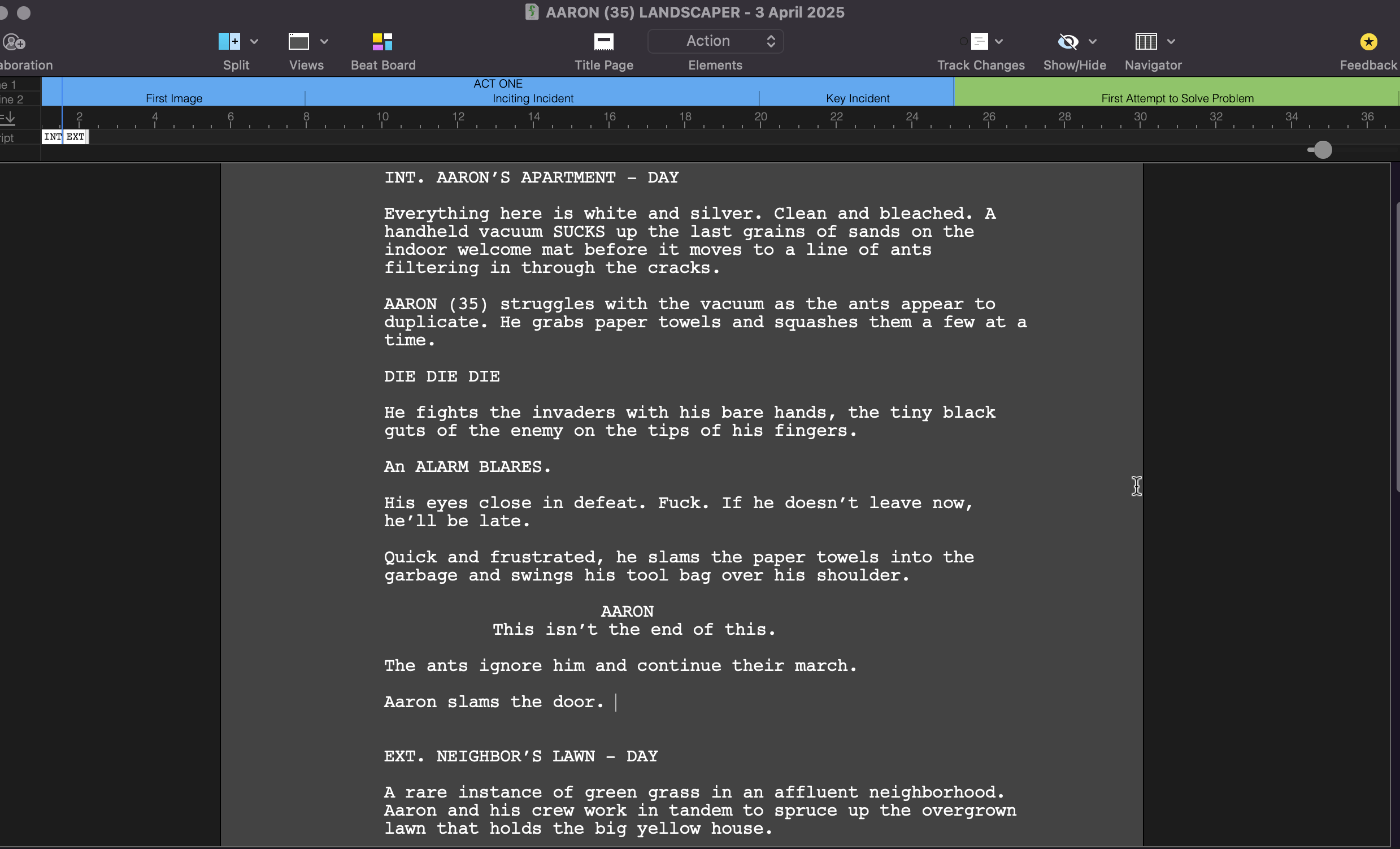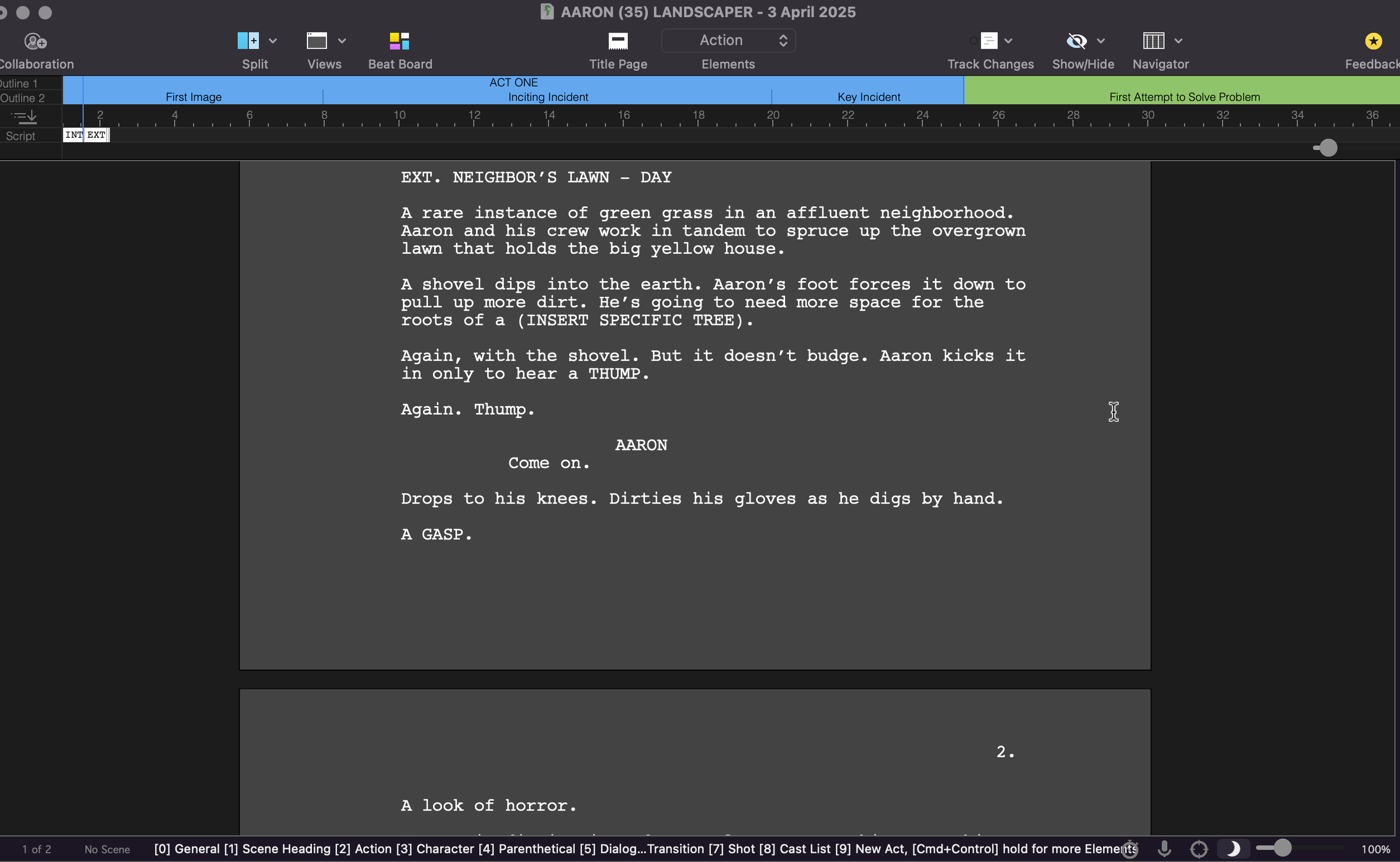11. ACT ONE: FIRST DRAFT
3 April 2025
Alison Rocket Ross
I feel like writing today — Let’s put Aaron (35) Landscaper on the page.
Yes, yes, yes, I know. We haven’t finished our outline, we haven’t even finished building our story! I don’t care. There’s no right way to do this and today, I just want to see what comes out. We can build and design all we want, but at the end of the day, we still have to write the damn thing.
ACT ONE OUTLINE
Opening Scene: Ants! Aaron’s lonely, clean life.
Inciting Incident: Digs up a body while landscaping.
Key Incident: Decides not to tell anybody.
Next Scene: Trivia night. Brooke knows something is off.
I’ve discovered it helps me to write around the outline. Final Draft is my software of choice, so I’ll share some images from my work in there.
NOTE: This is still a real time build. All the work I do on this project is while I am writing this series. No work is being done outside of my time with you.
Here we have our super generic three-act structure beat board. I will say, it’s a useful tool just to fill everything in and have it right there as you’re writing, but it changes on the page and that’s ok. Don’t be so strict with yourself when you’re writing. As long as you hit your story beats, don’t worry about percentages or page counts.
NOTE: I love Final Draft because it allows me to build my own templates. The standard templates are helpful, but they don’t match my personal work flow so sometimes I alter them, or just start from scratch on my own.
So here’s what it looks like after we’ve filled in our Act One beats.
On to the next phase.
As you’ll notice, I’ve been using the same information and just moving it around. As annoying as that is, it’s all part of the process for me. There’s a difference between seeing the beats on a text document vs. on a beat board vs. in the actual script. We’re preparing our minds to get down to business.
Let’s talk about this for a minute.
That first scene, we wrote a few episodes ago as an exercise. Remember that this is the roughest of the rough. I, personally, would never have such a long descriptive paragraph as the one you see there. I simply wanted to get it into the document.
Next up, as you’ll notice, I have quick phrases in parentheses. My usual process would be to transfer my entire outline from start to finish into this format. Slug line, then snippets of what I’m supposed to write. That way it’s in there. I don’t have to jump back and forth between the script and the beat board. It also allows me to leave hints for myself. Very few of those words actually make it into the writing itself.
So I’m going to do a little writing and we’ll see what happens.
Alright, we have a little bit here. Just enough. I’d like to point out a few key things.
Don’t let the research hold you back.
I’m talking specifically about (INSERT SPECIFIC TREE) we have towards the end of the first page. I do that, when I haven’t completed my research. Sure, I could stop everything and hit the Google machine until I find what I need, but that means spending a half an hour scouring the web when my goal in those moments was to WRITE. I don’t have to have all the answers right away. What I will do is make a list of all the research I need and dedicate some time to doing that. Then we’ll go back and fix it.
Writing brain and research brain are different for me. If I stop every time I don’t have a specific answer, I’d never finish a script. I love research. I love writing. But they are separate events.
We’re going to edit, just not right now.
I started my writing in prose and poetry, so as you can see, sometimes my scripts get fluffy. It’s a rough draft. That’s fine. But we will be going through and slashing like crazy once we get to the editing process. We want to be succinct and purposeful with every word. That is not what we have right now in our first page.
Why don’t I train myself to cut words down from the jump?
Great question. I don’t know. But here’s a secret — every script I write is different. I’ve written scripts where every action line was boring as all hell in the first draft. Pure stage direction. In editing, I had to go back and make it readable. On the other hand, I’ve also drafted scripts that read more like a novel and had to go back and cut it down. I don’t know everything. I’m just doing the thing. I try different methods. I’m still learning.
In Conclusion:
This was super fun and honestly, I needed a little bit of writing today. I have other scripts and projects that take up most of my time, so to be doing this series is really special. Let me switch gears and be open and honest about my process.
We are, however, writing way too early. Next time we’ll have to go back and start piecing together Act Two. I’m excited to see where our angry mother takes us and how Brooke and Aaron are going to face the challenges they have ahead.
Good times!
-Rocket




